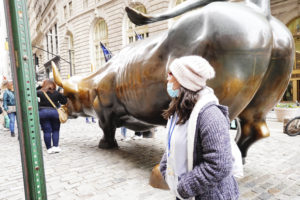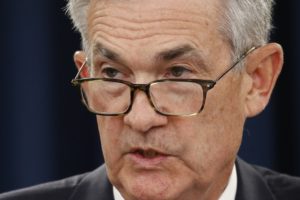No Banker Left Behind
They do have a license to steal There is no other way to read Tuesday’s report from the New York state comptroller that bonuses for Wall Street financiers rose 17 percent to $203 billion in 2009 Of course that is less than the $329 billion for bonus rewards back in 2007, when those hotshots could still pretend that they were running sound businesses They do have a license to steal .
They do have a license to steal. There is no other way to read Tuesday’s report from the New York state comptroller that bonuses for Wall Street financiers rose 17 percent to $20.3 billion in 2009. Of course that is less than the $32.9 billion for bonus rewards back in 2007, when those hotshots could still pretend that they were running sound businesses.
The economy is anything but sound, but you would hardly know that from looking at the balance sheets of the big investment banks. The broker-dealer firms on Wall Street made a record profit, estimated at greater than $55 billion by the comptroller, and the only thing holding back even more grotesque bonuses was concern over criticism from a public that was hardly doing as well.
The enormous rewards last year come not from their having righted the ship of finance by lowering the rate of mortgage foreclosures for ordinary folks, one of four who are now “underwater” on their loans. Consumer confidence this month is the lowest in 27 years, and unemployment is expected to hover near 10 percent for the next two years. No, they get bonuses because the Federal Reserve, backed by the Treasury, bought the toxic mortgage securitization packages that Wall Street banks were left holding. They, and they alone, were made whole.
The way the scam worked is that the Treasury deposited taxpayer dollars with the Federal Reserve, which in turn purchased a whopping $1.25 trillion in toxic mortgages. That’s the figure after the Treasury on Tuesday committed to depositing $200 billion more with the Fed to increase spending on this program — one that was ostensibly designed to increase credit availability to small businesses and others but has hardly accomplished that goal. Credit is still very tight because the big financiers have used the low-cost cash they received from those charitable government programs to solidify their own positions through acquisitions and the like.
Call it the “no banker left behind” program. While this plan didn’t keep people in their homes, it did wonders for Wall Street profits. To be accurate, it’s mostly the big bankers who reaped the rewards, for, as the FDIC reported Tuesday, the list of smaller banks throughout the country faced with default is growing longer. The big financial conglomerates, which have come to be covered by the FDIC under questionable circumstances, benefit from that arrangement, but they are hardly the ones hurting. The victims are primarily the smaller traditional banks that played by the rules but were overwhelmed after the housing market became dreadfully corrupted.
The number of banks on the FDIC’s “problem list” soared from 252 at the end of 2008 to 702 last month, and the government’s fund to insure depositors fell to minus $20.9 billion. The source of the problems for those banks is the sorry state of the housing market, with the number of loans that are more than three months overdue at the highest level in the 26 years that such records have been collected. Those hurting are mostly smaller banks, which are paying for the havoc in the housing market that the Wall Street giants created with their collateralized debt obligations (CDOs) and credit default swaps (CDSs). Those mysterious financial innovations meant turning the housing market into a grand casino using people’s homes as chips, with the Wall Street crowd holding all the high cards.
Yet when the crash occurred, it was not those who designed and sold the toxic packages that suffered but rather the individual homeowners whose mortgages had been put into play. They and the smaller banks were still playing by the old rules, which meant that houses were presumed to be worth the money loaned on them. But there was no such disadvantage for the brokers, who would convert those mortgages into stock bundles. They had succeeded in getting the U.S. Congress, at the end of 2000, to exempt those CDOs and CDSs from any regulation.
This debacle was the accomplishment of the Commodity Futures Modernization Act, pushed through Congress during the last years of the Clinton administration by former Goldman Sachs honcho and onetime Treasury Secretary Robert Rubin and his protégé and successor, Lawrence Summers, now the top economic adviser in the Obama White House. The intent was, in Summers’ words, to provide “legal certainty” for those CDO investment gimmicks, meaning no regulator could look to see what was inside the packages. We still don’t know, although we taxpayers now are on the hook for 1.25 trillion dollars’ worth of them.
Can’t say it didn’t work out for the folks at Goldman Sachs and JPMorgan Chase, where total average compensation was up last year by 31 percent. How did you make out?
Your support matters…Independent journalism is under threat and overshadowed by heavily funded mainstream media.
You can help level the playing field. Become a member.
Your tax-deductible contribution keeps us digging beneath the headlines to give you thought-provoking, investigative reporting and analysis that unearths what's really happening- without compromise.
Give today to support our courageous, independent journalists.




You need to be a supporter to comment.
There are currently no responses to this article.
Be the first to respond.